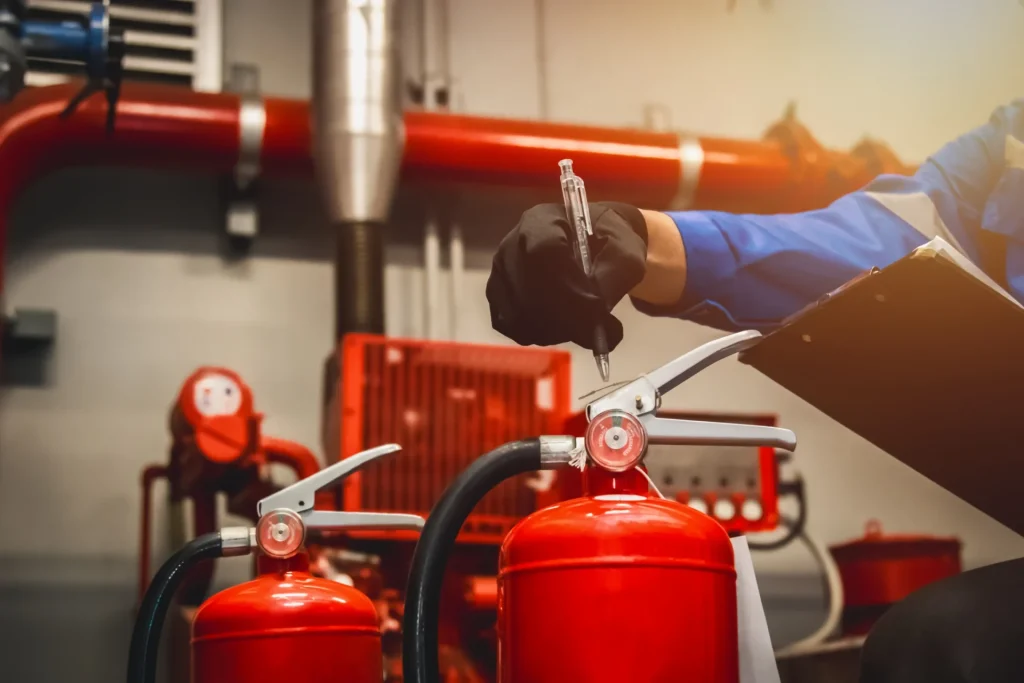Those of us familiar with NFPA 10, Portable fire Extinguishers know the difference between extinguisher inspection and extinguisher maintenance. But for those people that are less familiar with the industry standard, it may not be so clear. In the event of a fire emergency, these tools are intended to be a first line of defense and need to be ready for action during the earliest stages of fire propagation. For them to be ready and working properly, the inspections and maintenance activities must be done by the book.
At first glance, it seems pretty simple. The inspection is a 30-day quick check of the extinguisher to make sure that it is in its proper location and that it appears to be in working order. The inspection can be done by just about anybody that visits all extinguisher locations within a building. A security guard or a building maintenance person are pretty good choices for this task. A building owner that can’t identify a person on staff can usually get a reasonable contract with the fire equipment distributor to provide this service. No matter who does it, it is just a quick check inspection.
Extinguisher maintenance is an annual event. The confusion arises because not all extinguishers are torn down and internally examined on an annual basis. In fact, the most popular type, the stored pressure dry chemical extinguisher, is only internally examined every 6 years. At the point when this type of extinguisher has been in service for 6 years, an internal examination is required to be performed, then at 12 years a hydrostatic test is performed, which includes the internal examination. So the cycle for opening these extinguishers for internal maintenance is 6 years, but external maintenance is performed annually.
Every extinguisher service manual contains information on what needs to be done for annual maintenance. Although technicians rely on these manufacturer manuals as the basis for this activity, there are individuals that are not familiar with them and question the need for anything more than the 30-day quick check. To bridge the gap, NFPA 10 was updated for 2010 with information on annual maintenance. The information appears in annex section A.7.3.2 and provides a sample list of 27 items that are procedures or checks for rechargeable stored pressure dry chemical extinguishers.
The new annex material also reiterates that annual maintenance requires the service of a trained and certified technician that has the proper tools, parts and service manuals. Most importantly, the NFPA 10 annex clarification says that maintenance of extinguishers should not be confused with 30-day quick check inspection of extinguishers. This information is simply a clarification of a well understood concept in the industry. In other words, this has always been the intent of the standard. The standard contains the official position of the NFPA Technical Committee on Portable Fire Extinguishers. With the clarity of the material provided in the annex, I would be surprised if there is anyone who does not comprehend it. In the interest of safety, my hope is that it will not be ignored.
The above article is the opinion of the author and does not necessarily represent the position of a NFPA technical committee or the NFPA and may not be considered to be or relied upon as such. Mark Conroy is an engineer with Brooks Equipment Company and a principal member of the NFPA Technical Committee on Portable Fire Extinguishers.


